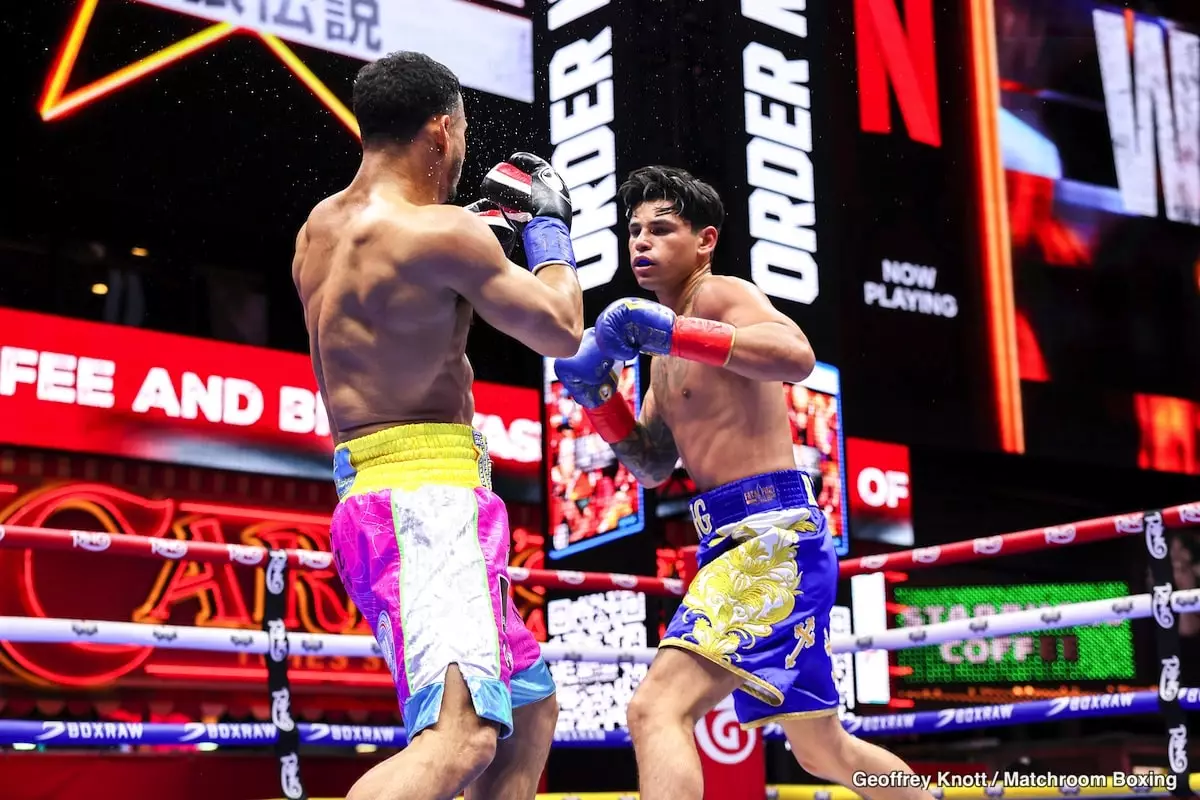Oscar De La Hoya, the highly regarded promoter and former boxing champion, has made headlines with his declaration regarding Ryan Garcia’s next bout. Rather than pursuing a rematch with Devin Haney, whom Garcia defeated last year, De La Hoya is advocating for a different course—one that involves Garcia avenging his recent loss to Rolando ‘Rolly’ Romero. This pivot in strategy speaks volumes about Garcia’s current standing in the boxing world, marked by the aftermath of an unexpected setback that has left his popularity teetering on the brink.
Garcia’s defeat to Romero has certainly shaken the foundation that the young boxer has been building. The unanimous decision victory for Romero in their May 2 clash raised questions about Garcia’s fighting spirit and tactical approach after a promising start in his career. De La Hoya’s assertion that a rematch with Haney lacks merit centers on the observation that Garcia must first overcome the lingering effects of his defeat to Romero.
Garcia’s statement, which echoed De La Hoya’s sentiments, expressed that he has no intention of revisiting his encounter with Haney just yet. The emphasis on uplifting Garcia’s spirits and rallying him back into a winning position could be seen as an acknowledgment of the pressures that young fighters face after a defeat. This delicate balance of mental resilience and physical aptitude makes for a complex decision as Garcia contemplates the next steps in a career that has faced sudden turbulence.
Lost Popularity and Rebuilding Confidence
The decline in Garcia’s stock following his loss cannot be understated. A fighter’s reputation in boxing is tightly tied to their recent performances, and Garcia’s timid approach during his loss to Romero was difficult for fans to digest. As Oscar De La Hoya assessed the situation, he opined that Garcia’s ability to mainstream success is contingent on how he navigates the aftermath of this defeat. The visibility and potential for celebrity status that once surrounded Garcia now appear dimmer, as uncertainty surrounds his tactical evolution and capacity to reclaim his once-untouchable momentum.
Garcia’s initial rise in the sport was rife with promise—a lightning-fast left hook, engaging charisma, and a social media presence that appealed widely to younger audiences. However, each setback, particularly one that is this public, threatens to unravel that carefully cultivated image. De La Hoya’s advice rings clear: facing Romero again is not just a fight; it’s a necessary means of restoration, a chance for Garcia to reaffirm his prowess and reinstate lost confidence in the trenches of the boxing ring.
Strategic Direction: Potential Pitfalls
Choices about match-ups can be influenced not only by performance metrics but also by the psychological layers that encapsulate a fighter’s persona. The conversations surrounding Garcia’s next steps are crucial, with De La Hoya signaling an inclination toward a well-planned recovery strategy. However, that path is not without risks. Engaging Romero again could potentially exacerbate Garcia’s woes if poorly executed. To combat the potential of a catastrophic second loss, De La Hoya might consider steering Garcia toward a less daunting opponent to build back his self-esteem and hone his skills.
The option of easing back into competition with a lighter opponent cannot be dismissed. The sport of boxing is unforgiving, especially for fighters who absorb a heavy blow to their reputation, as Garcia did. An incremental approach—fighting a less skilled adversary first—could allow him to reframe his narrative before advancing to more challenging bouts. Critics of Garcia might argue that the instinct to immediately avenge a loss is a hallmark of great fighters, yet the need for psychological readiness and strategic planning are equally paramount in ensuring a fighter is not just fit physically, but also mentally prepared to embrace the trials of the ring.
Looking Ahead: The Fight for Identity
As Garcia weighs his future, the underlying storyline extends beyond mere match-ups; it is about reclaiming an identity that feels vulnerable in light of recent challenges. Every professional athlete, particularly in combat sports, must continuously evolve, learning from defeats to refine their game plan. The pressure to maintain excitement around one’s brand and abilities complicates this process, particularly for younger, up-and-coming boxers who deal with the constraints of public scrutiny.
The focus being placed on a potential rematch with Romero is not just a revival of a competitive spirit but a litmus test for Garcia’s resilience in confronting adversity—a chance to showcase growth from experience rather than be defined by it. Each decision must bear the weight of past lessons and an eye on the future, ensuring that Ryan Garcia can step back into the ring—not just to fight, but to remind the world of who he is and what he’s capable of becoming. The boxing arena is not only a battleground for titans but also a canvas upon which athletes paint their legacies, one decisive fight at a time.

